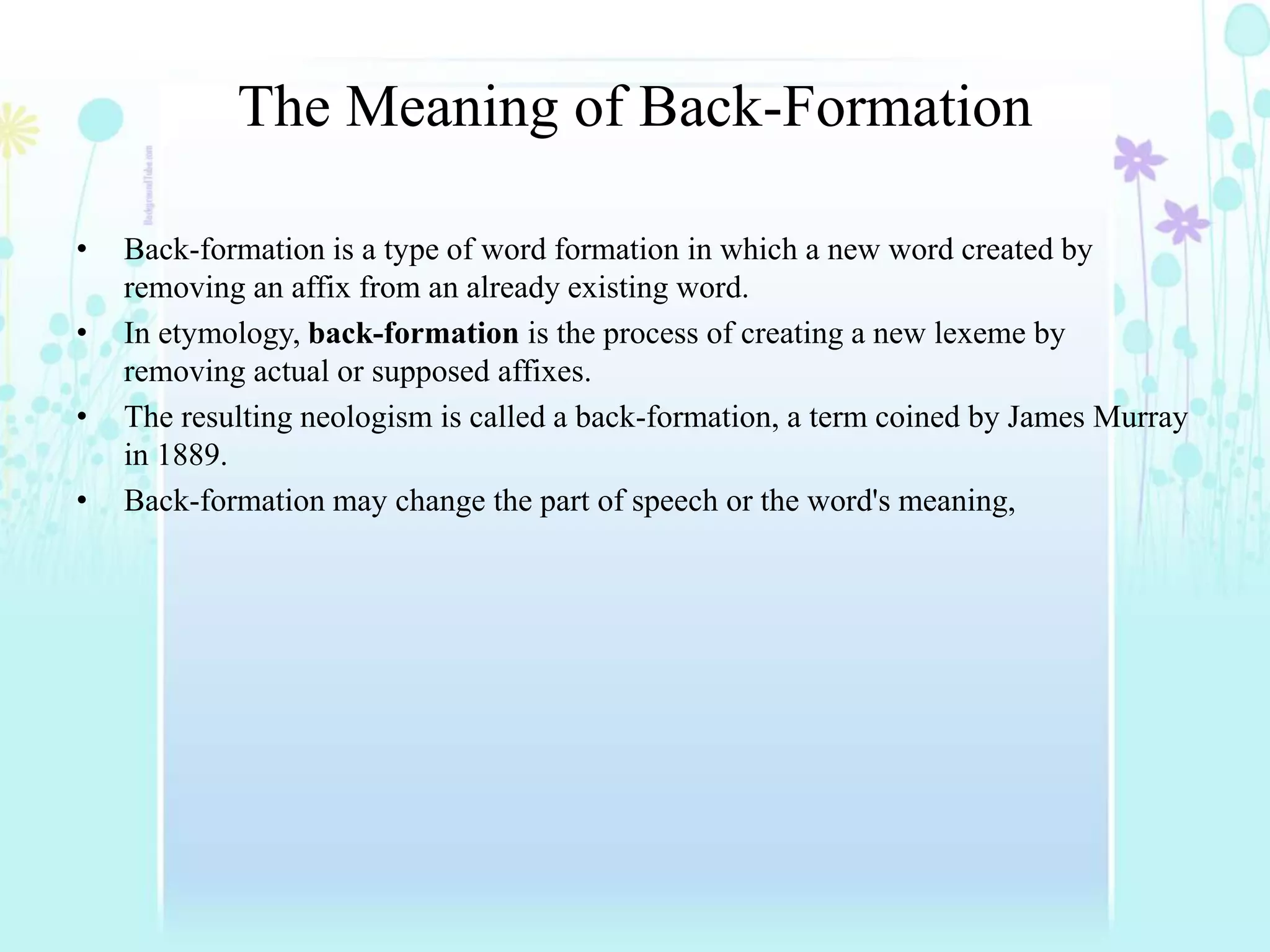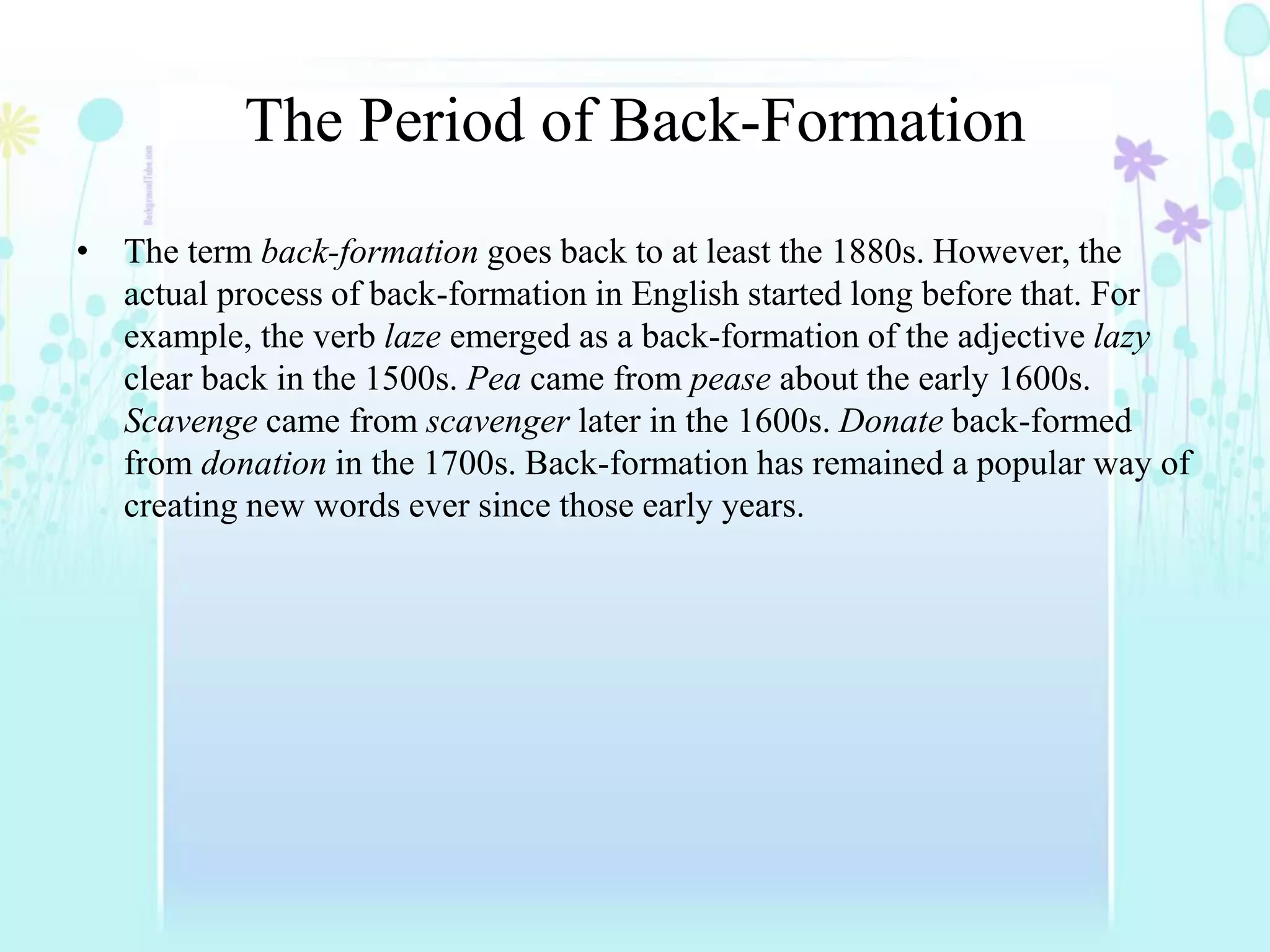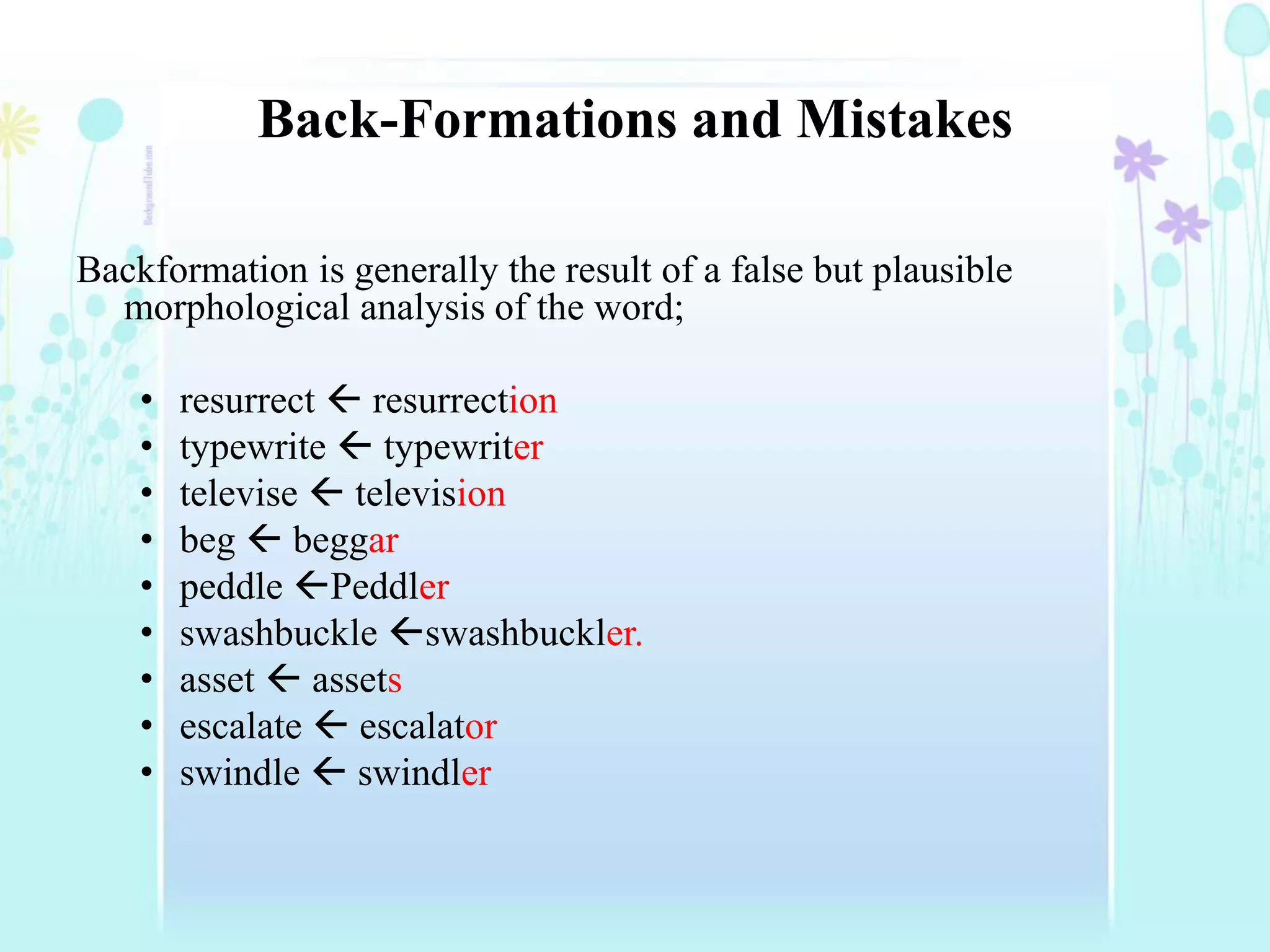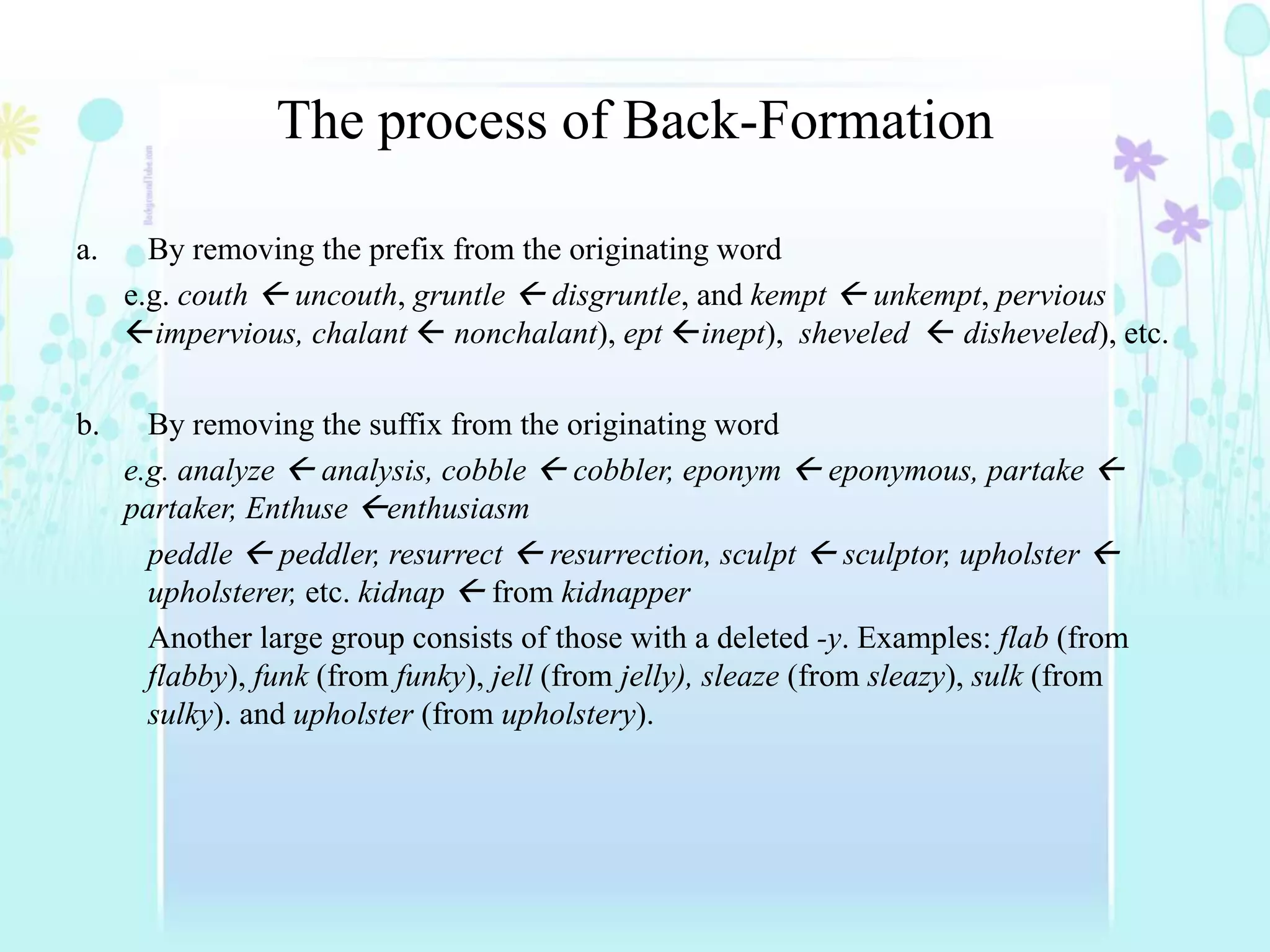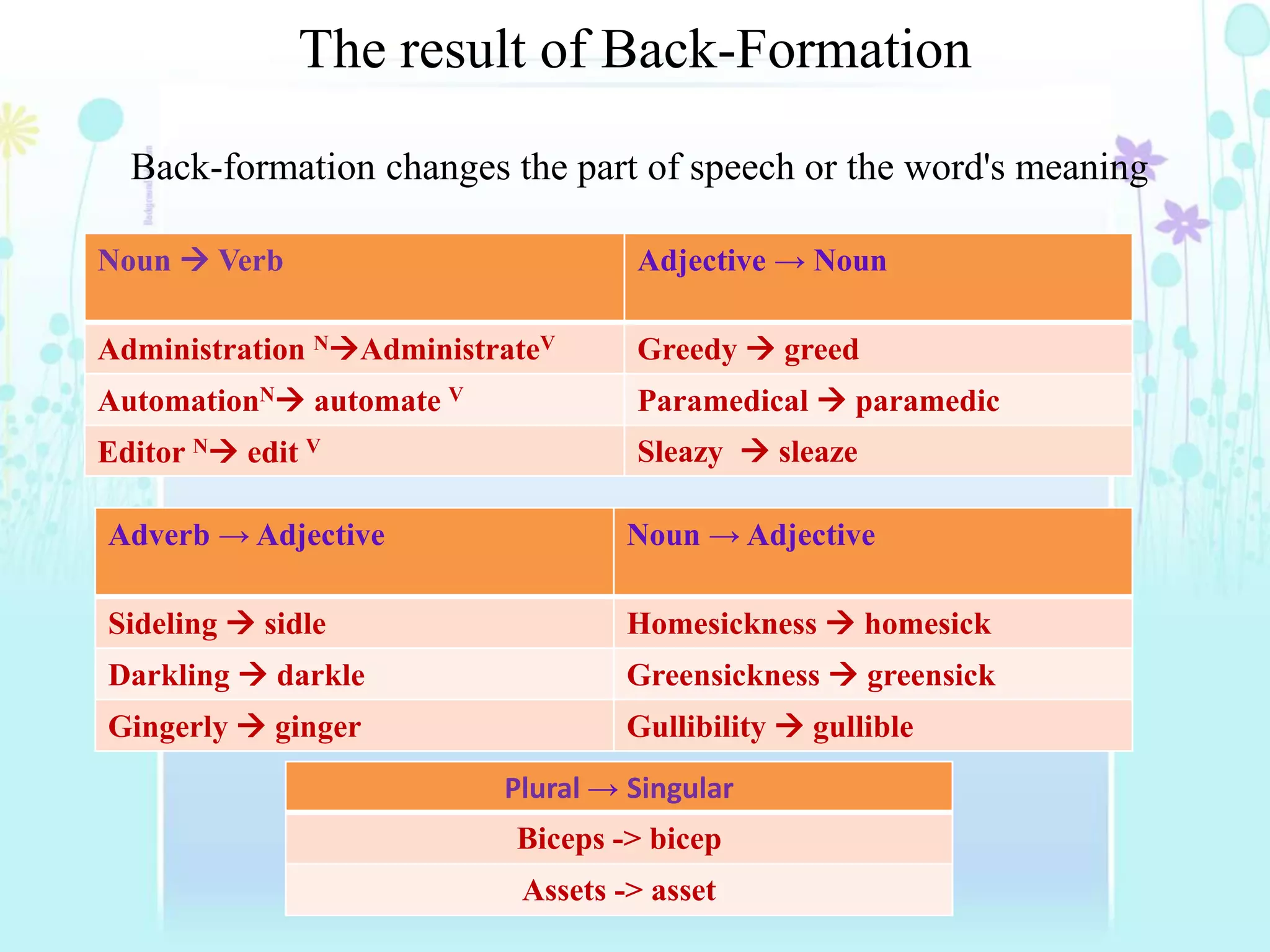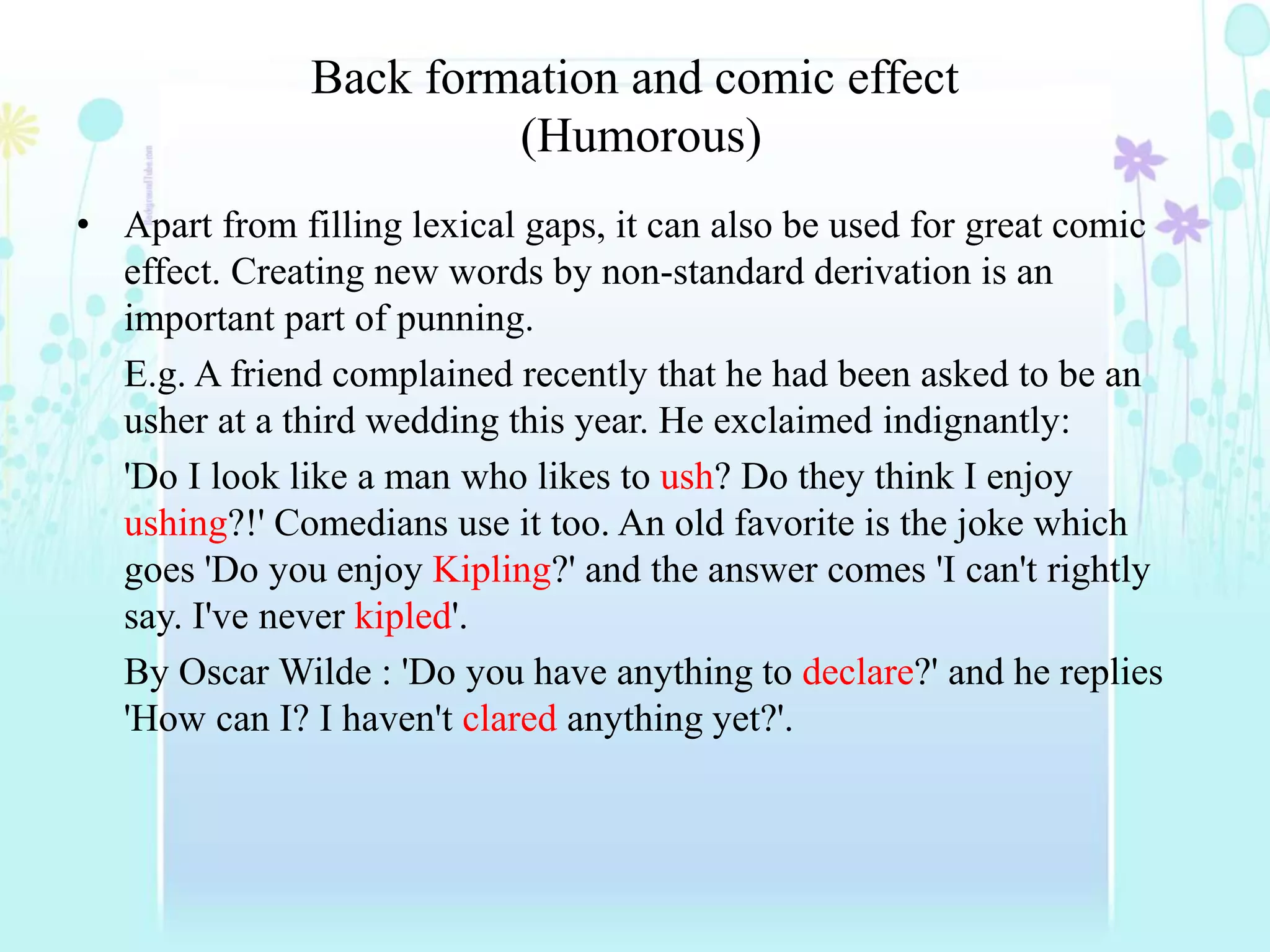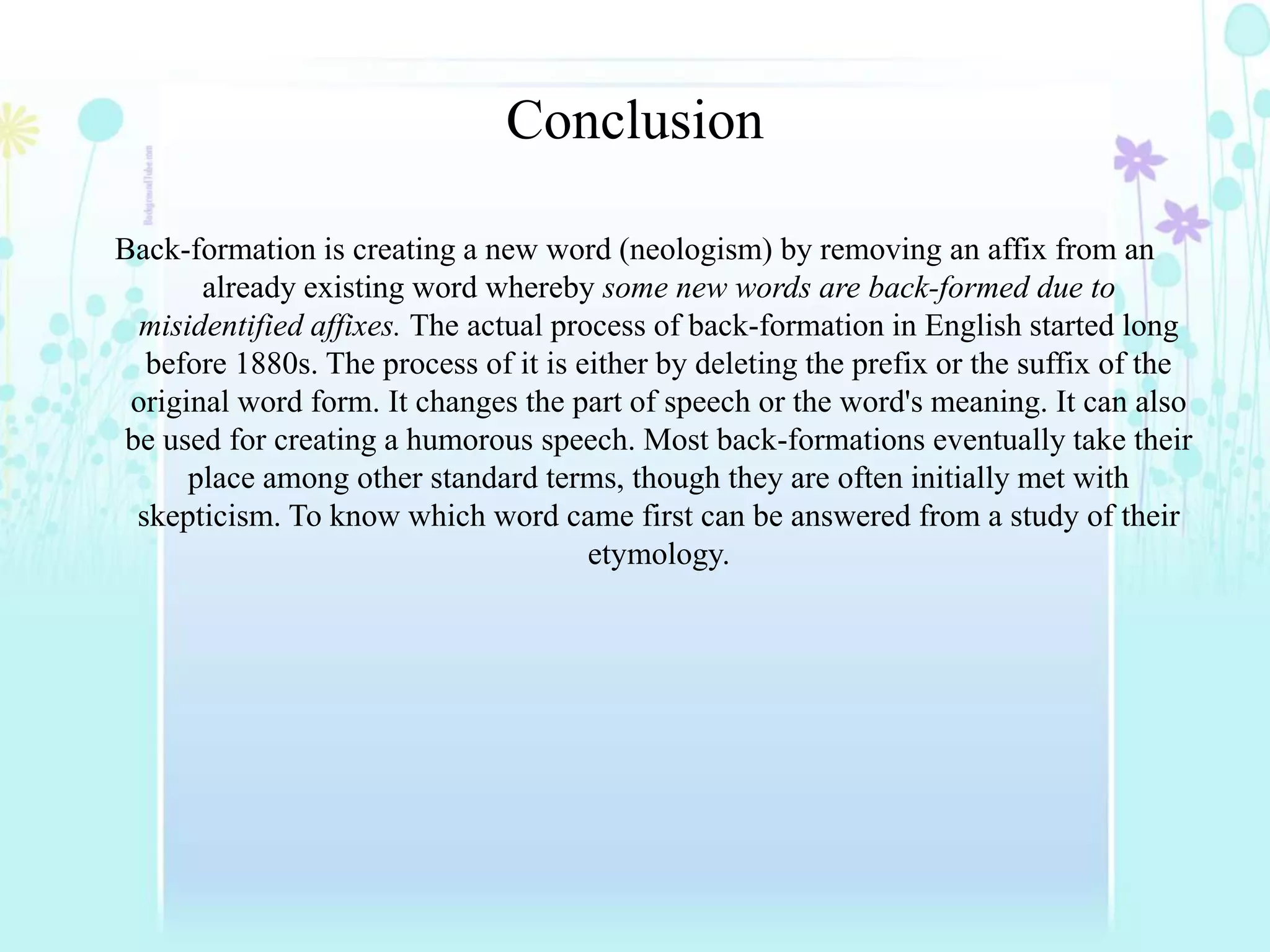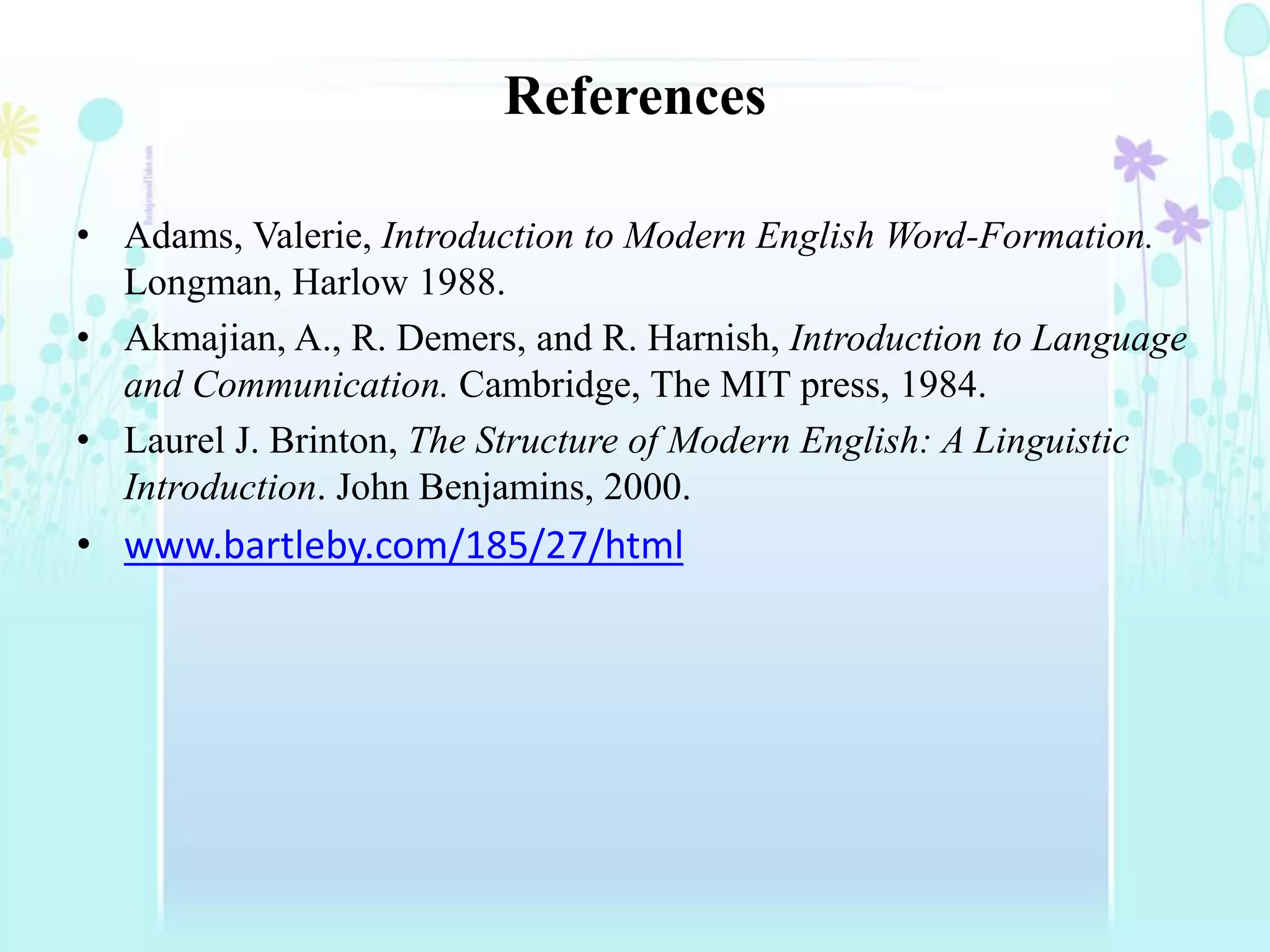This document discusses back-formation, which is a type of word formation where a new word is created by removing an affix from an existing word. It can change the part of speech or meaning of the word. Some examples provided include "peddle" from "peddler" and "resurrect" from "resurrection". The process usually involves removing a suffix or prefix. While initially seen as non-standard, many back-formations eventually become commonly accepted words. The document also notes back-formation has been used for centuries in English to coin new terms.


